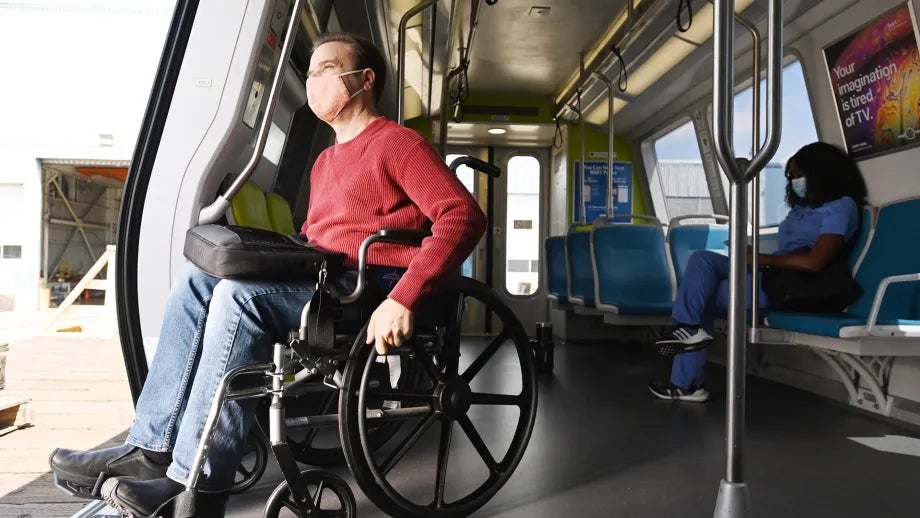Access & Mobility Work Plan
The Transit Transformation Action Plan’s Access and Mobility Work Plan focuses on five actions to improve transportation access for people with disabilities, older adults and people with low incomes in the Bay Area.
In July 2021, MTC’s Blue Ribbon Transit Recovery Task Force approved a set of 27 actions – as the Bay Area Transit Transformation Action Plan – to guide the future of the Bay Area’s public transportation network as the region adjusts to new conditions created by the Covid-19 pandemic.
The Access and Mobility Work Plan is just one piece of the Transit Transformation Action Plan, and it focuses on the transportation needs of people with disabilities, older adults and people with low incomes.
Five Key Accessibility Actions
The Bay Area Transit Transformation Action Plan identified five actions under “Accessibility” as important in achieving a more connected, efficient and user-focused mobility network. These actions – 21 through 25 – are part of the larger Transit Transformation Action Plan.
To move these actions forward quickly, MTC staff have bundled these actions together as the Access and Mobility Work Plan. This work plan will be integrated with the 2023 update of the Coordinated Public Transit-Human Services Transportation Plan (Coordinated Plan).
Actions & Work Plan Activities
Action 21: Designate a Mobility Manager to coordinate rides and function as a go-between for transit agencies in each county, serving people with disabilities, older adults and people with low incomes
- Facilitate meetings with agencies, organizations and other parties to discuss current condition of mobility management and find consensus on which entity should lead mobility management functions.
- Document the process and create an analysis for each county.
Action 22: Fund for one-seat paratransit ride pilots and develop cost-sharing policies for paratransit trips that require multiple transit agencies
- Design and issue one-seat ride pilot program call for projects. Award project funding for up to three pilots.
- Facilitate meetings with transit agency staff to document cost-sharing agreements and transfer practices and policies for cross jurisdiction trips.
- Provide analysis of current agreements and practices. Provide recommendations for improvements.
- Map existing transfer points. Provide criteria and minimum standards for safe transfer points.
Action 23: Ensure that the next generation of the Clipper® system includes paratransit services
- Connect the Clipper Next Generation system with Americans with Disabilities Act (ADA) paratransit booking software using advanced programming interfaces (APIs) to enable the two software systems to communicate directly, allowing customers to pay for paratransit rides with their Clipper account.
Action 24: Identify key paratransit challenges and recommend improvements through the Coordinated Plan update
- Synthesize recent findings for top issues for paratransit riders.
- Meet with paratransit coordinating councils, transit accessibility committee members and other paratransit riders in forums, focus groups and other small setting meetings for deep engagement on top issues.
- Meet with transit staff and paratransit providers to define the top paratransit provision challenges.
- Prepare recommended solutions and strategies for service improvement along with detailed cost information to accompany each recommendation.
Action 25: Standardize eligibility practices for programs that benefit people with disabilities
- Meet with transit staff to document current ADA paratransit eligibility practices.
- Provide analysis, recommendations and detailed cost information on changes to make eligibility practices more standard across the region.
Drennen Shelton, Regional Network Management
Phone: 415-778-5309
Email: dshelton@bayareametro.gov
The Transit Transformation Action Plan aims to improve the Bay Area’s public transportation network to create a more user-friendly and connected system. It identifies key targets and actions to make this vision a reality.
The Action Plan builds on the work and recommendations of the Blue Ribbon Transit Recovery Task Force.

